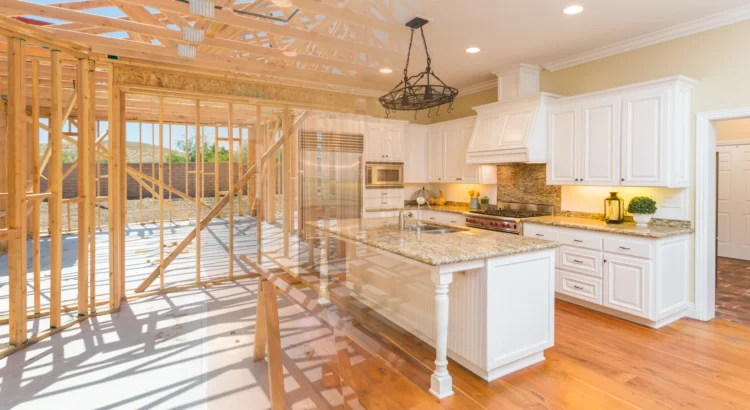Home Design
Home design encompasses a diverse array of styles and philosophies that shape the spaces we inhabit. From the sleek lines and cutting-edge technology of modern designs to the timeless charm of traditional homes, the world of home design reflects both cultural preferences and individual tastes. Eco-friendly home designs emphasize sustainability, blending functionality with environmental consciousness. Open-concept layouts redefine spatial boundaries, fostering connectivity and versatility within living spaces. At its core, home design is an art form that goes beyond aesthetics, encapsulating the principles of functionality, comfort, and personal expression. It involves a careful balance of architectural elements, interior decor, and innovative solutions to create spaces that not only reflect the inhabitants’ lifestyles but also enhance their overall well-being. Whether one seeks the sleek and efficient or the classic and warm, home design is a dynamic field that evolves with societal trends, technological advancements, and a deep understanding of the way people live.
Modern Home Designs
Modern home designs epitomize a forward-thinking approach to residential architecture, encompassing an array of characteristics that set them apart. Defined by clean lines, open spaces, and a focus on functionality, modern homes often incorporate minimalist architecture that strips away unnecessary ornamentation. Technology plays a pivotal role, with smart home systems seamlessly integrated to enhance convenience and efficiency. The interior design of modern homes embraces contemporary aesthetics, favoring neutral color palettes and a harmonious blend of form and function. The use of innovative building materials further characterizes these designs, emphasizing sustainability and energy efficiency. Architects and homeowners alike appreciate the flexibility and adaptability inherent in modern designs, allowing spaces to evolve with changing needs. From floor plans that maximize natural light to the incorporation of cutting-edge materials, modern home designs reflect a dynamic and progressive approach to creating living environments that are both visually striking and highly livable.
Traditional Home Designs
In stark contrast to the sleek and minimalist aesthetics of modern designs, traditional home designs embrace a rich tapestry of architectural styles and timeless elements that evoke a sense of heritage and history. Characterized by intricate detailing, classic proportions, and a commitment to preserving historical features, traditional homes often draw inspiration from various periods such as Colonial, Victorian, or Craftsman. These designs celebrate craftsmanship and incorporate a diverse range of materials, including wood, stone, and brick. The interior decor of traditional homes exudes warmth and familiarity, often featuring ornate furnishings, patterned fabrics, and an emphasis on symmetry. Traditional design principles prioritize a sense of permanence and continuity, creating spaces that feel inviting and enduring. The appeal of traditional home designs lies in their ability to transcend passing trends, offering a comforting and timeless aesthetic that resonates with a sense of place and nostalgia. As architectural styles evolve, traditional designs endure, maintaining their enduring charm and cultural significance.
Eco-Friendly Home Designs
Eco-friendly home designs represent a conscientious and sustainable approach to residential architecture, focusing on minimizing environmental impact and promoting a harmonious coexistence with nature. These designs prioritize the use of sustainable building materials, such as recycled wood, bamboo, and other eco-friendly alternatives. Energy efficiency takes center stage, with features like solar panels, energy-efficient appliances, and proper insulation contributing to a reduced carbon footprint. Green roof and wall concepts integrate living vegetation into the structure, enhancing insulation and biodiversity while adding aesthetic appeal. Rainwater harvesting systems further contribute to resource conservation.
The essence of eco-friendly home designs lies in passive design strategies, which leverage the natural elements for heating, cooling, and lighting, reducing reliance on artificial systems. These homes often embrace an open layout to enhance natural ventilation and light, promoting a connection between indoor and outdoor spaces. The interior decor aligns with sustainable principles, favoring eco-friendly furnishings, recycled materials, and a commitment to minimizing waste. Eco-friendly home designs not only address environmental concerns but also provide a healthier and more sustainable way of living, showcasing that beauty and functionality can coexist with ecological responsibility.
Open Concept Layouts
Open-concept layouts redefine the traditional boundaries of home design, fostering an environment characterized by connectivity, versatility, and a sense of spaciousness. These layouts prioritize the removal of physical barriers, creating fluid transitions between different living spaces. The benefits extend beyond aesthetics to the functional aspects, promoting natural light flow, facilitating social interactions, and providing flexibility in furniture arrangement. Striking a delicate balance between privacy and openness, open-concept designs encourage a dynamic and adaptable lifestyle.
In conclusion, the world of home design is a dynamic and multifaceted realm that accommodates a diverse range of preferences and values. From the sleek and technologically advanced modern designs to the timeless charm of traditional homes, the spectrum of architectural styles allows individuals to express their unique tastes and priorities. Eco-friendly home designs exemplify a growing commitment to sustainable living, emphasizing environmental responsibility without compromising style. Open concept layouts, on the other hand, redefine spatial relationships, fostering a sense of openness and interconnectedness. Collectively, these facets of home design showcase the evolving nature of architecture, reflecting societal trends, technological advancements, and a deep understanding of how people live and interact within the spaces they call home. The beauty of home design lies not only in the aesthetic choices but also in the ability to create environments that enhance well-being, comfort, and the overall quality of life.
